Hey teacher! Thanks for stopping by! 🙂 In this post I’ll show you how to write objectives for lesson plans. As trivial or tedious as they may seem, creating objectives is actually the most vital element to include as you plan your lessons. Objectives provide a clear picture of what is to be learned. They are SUPER important. Why? Because without them, you are essentially leaving your students out of the picture. You end up putting all your focus on a standard to be taught. A box to be checked.
You know what I’ve found? Those lessons that I just “whipped up” without adding objectives were pretty worthless. (Just speaking from experience here.) I didn’t really have a clear picture of the end goal. The destination. I didn’t know exactly what I was looking for my students to do. As a result…My students had no ownership of their learning, and no picture of where we were going in the lesson. They were anxious, because it wasn’t clear what was expected of them. And I felt like I was just filling time. Ugh.
Set Yourself Up for Success
Friends, including objectives provides the initial framework that will support your ENTIRE lesson. It will give you confidence and help you relax. It will give your students confidence and help them relax. And the best part? It doesn’t take but a few minutes to process in your brain WHAT students will need to know and do by the time your lesson is done. I want this to become EASY for you, friend. And I want it to become a HABIT.
Let’s make your Sunday night planning sessions a bit less scary. 🙂
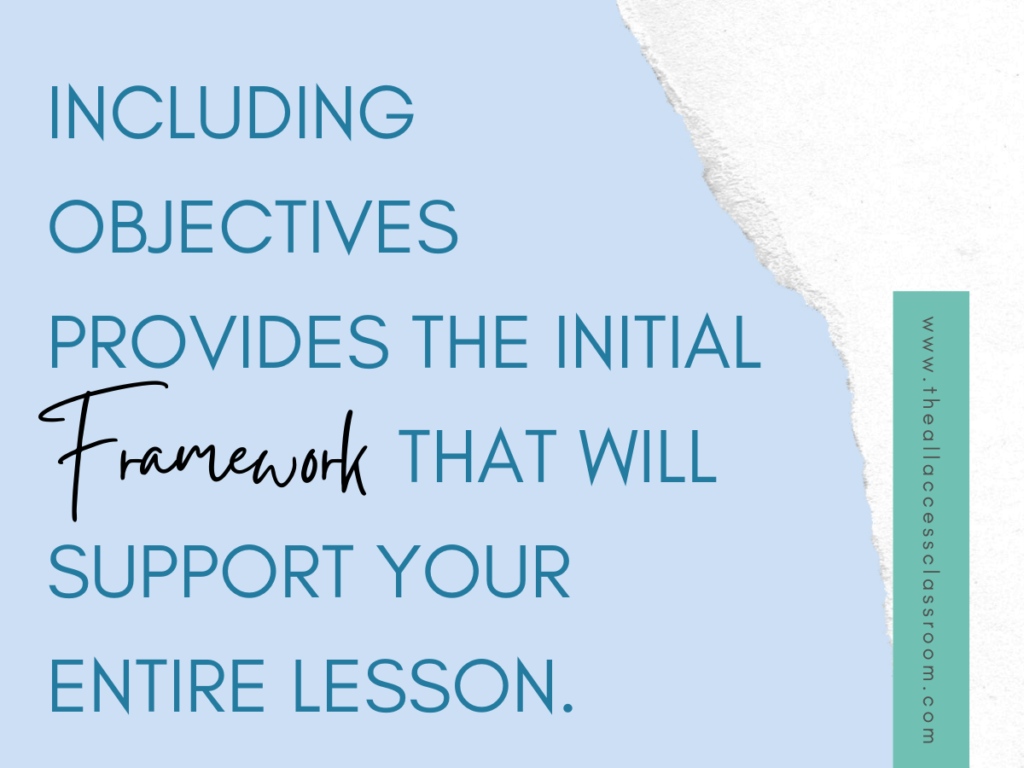
Content and Language Objectives – Why Both Are Important
For years, I had only heard of and used content objectives. I picked a standard, came up with activities to teach it, and threw in a quiz to grade. Voila. But then…over the years I realized that I had an increasingly wide variety of learners. And I was introduced to the idea of having both content and language objectives for my lessons. So novel to me, I was curious to know…why both?
Surprise! You’re a Language Teacher!
Here’s the thing. You, my friend, no matter what subject you’re teaching, are a LANGUAGE teacher. You are a teacher of academic language. English structures, forms, and functions are the vehicle through which students learn content. Engage with content. Talk about it, process it, question it, analyze it, demonstrate it. How else do they do these things except through the use of language? And you bet your biscuits they are NOT using this type of language at home. So who will teach it to them? That’s where you come in!
But wait, what? Teach English AND all this content I have to cover? How on earth?! Let me encourage you. It is absolutely possible to teach vital language skills AS you teach your content. This is what creating an “all-access” classroom is all about. And the best part is, your students’ proficiency will skyrocket when you EMPOWER them with language. It’s like a booster shot for every lesson you teach! And over time, your classroom walls will be ringing with the sounds of academic discourse. Music to your ears. 🙂
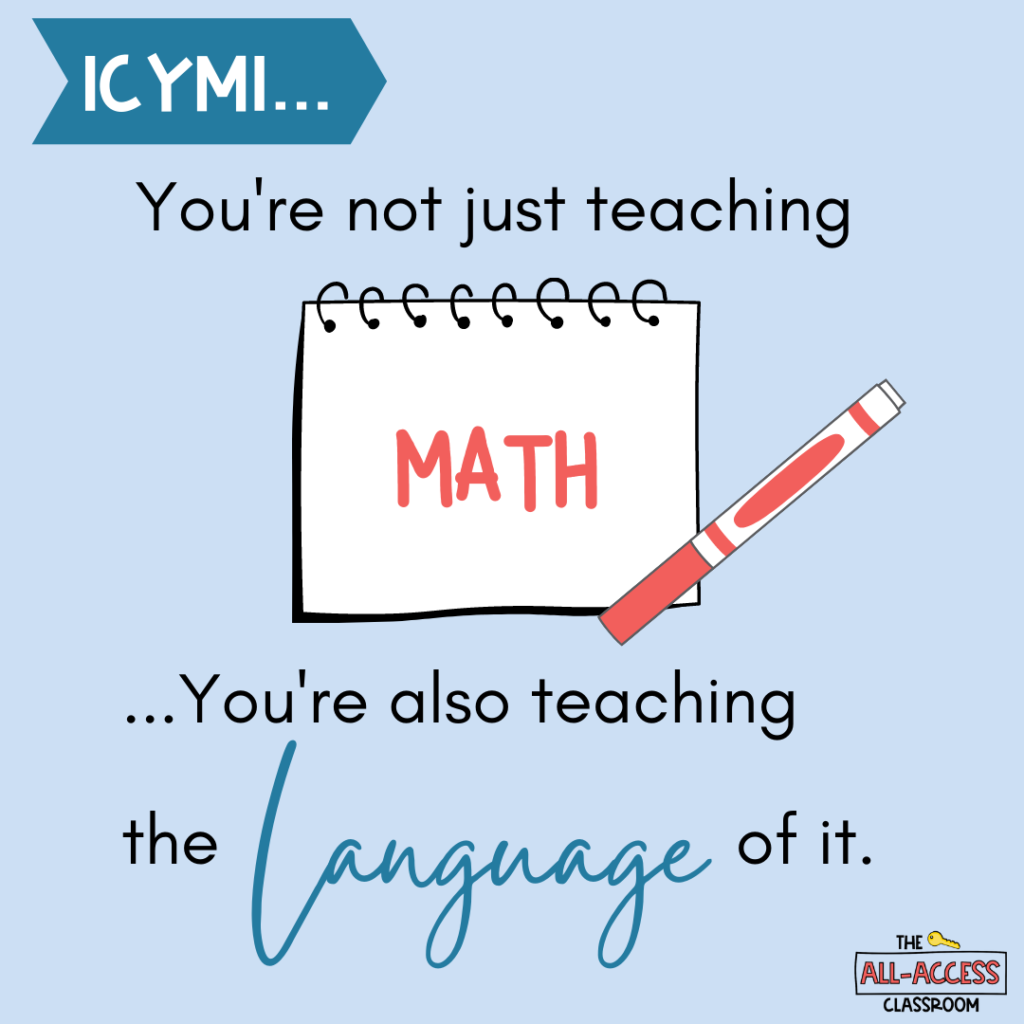
Supporting All Learners
So, notice I haven’t even mentioned your English language learners yet? That’s because although they are the obvious beneficiaries of your sprinkling in of language instruction, they’re not the only ones! ALL your students need academic language to succeed! They all thrive when they’re taught how to speak, read, write, and listen in the language of your subject area.
Have I convinced you yet to try writing both content and language objectives? You don’t have to be an ESL teacher to start. Here’s the process:
How to Write Content Objectives
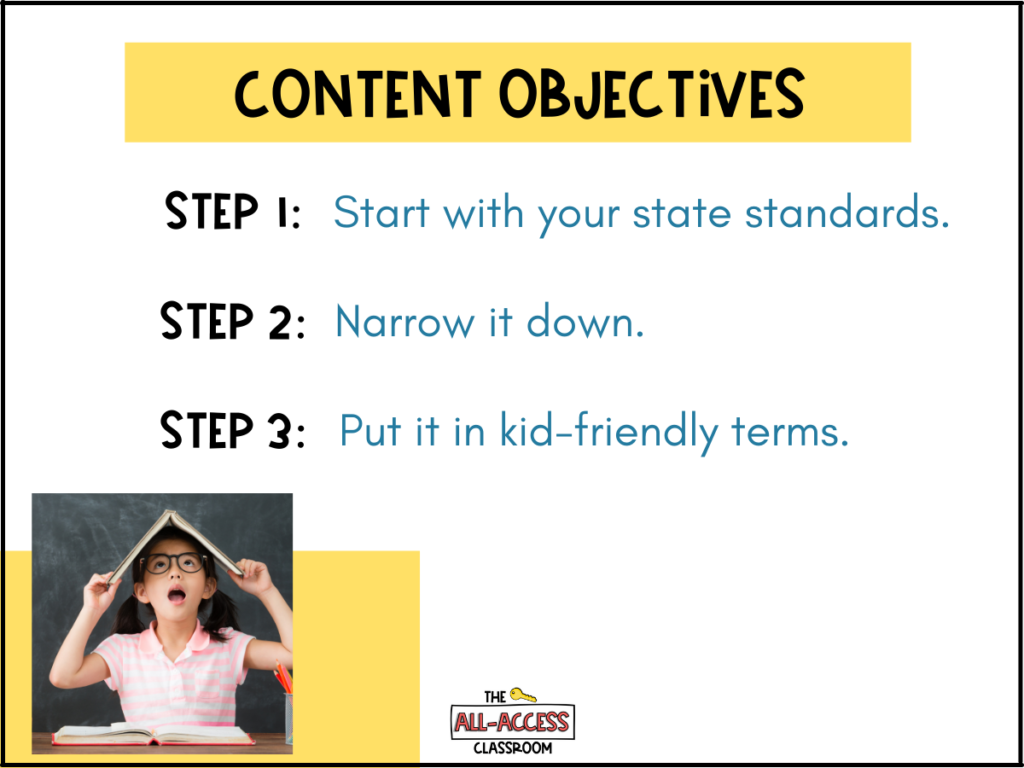
1. Start with your state standards.
Could be Common Core, or whatever your state-specific standards are. You might refer to a scope and sequence, a grade-level yearly plan, or your own pacing guide. Your content objectives should come straight from a learning standard. They should include some language specific to your subject and unit.
2. Narrow it down.
Friend, Rome wasn’t built in a day. And you can’t teach “how to use quotation marks in dialogue” in a day either. Believe me, I tried it. Nope. What you gotta do is narrow your standard down to a skill that you can actually cover and teach in 1-2 lessons. Keep it manageable.
3. Put it in kid-friendly terms.
Have fun with it! You’re about to write this on the board, and who is it for? Maybe your admin, in the off-chance that they come in for an observation? No, it’s for your students of course! Make your objectives approachable for them. “Today we will…” is a great way to start.
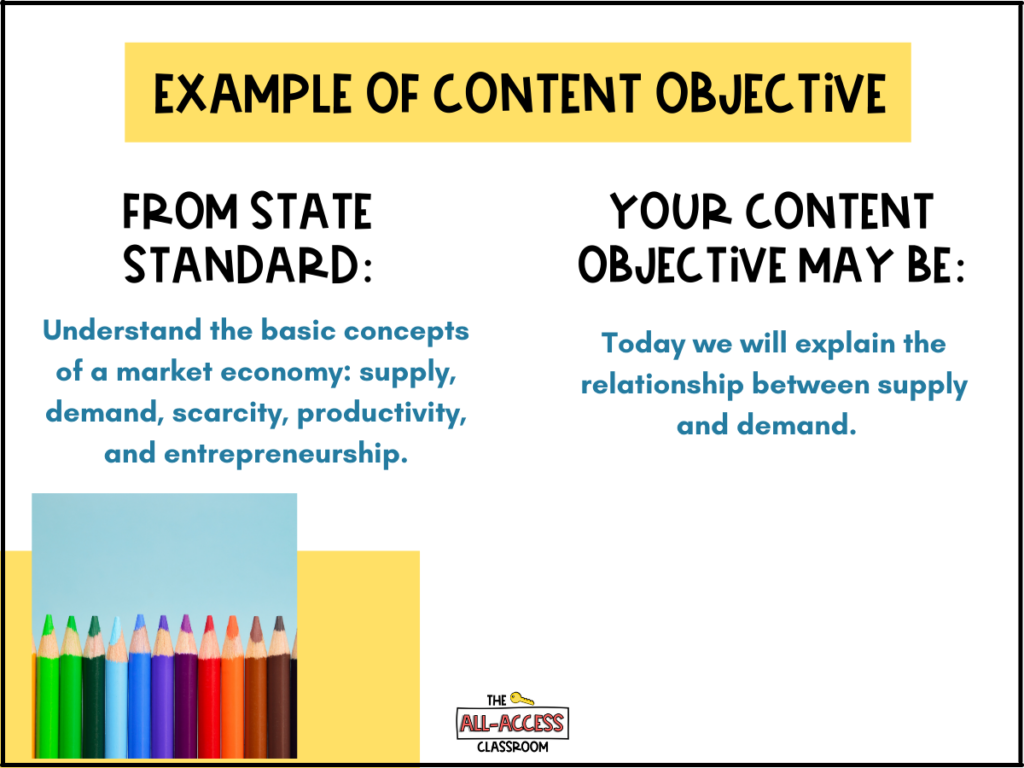
How to Write Language Objectives
Ok don’t stress. Yes, there are a LOT of possible language objectives. But you only really need to pick one– the one that will empower your students the most for YOUR particular content lesson. Here’s the process:
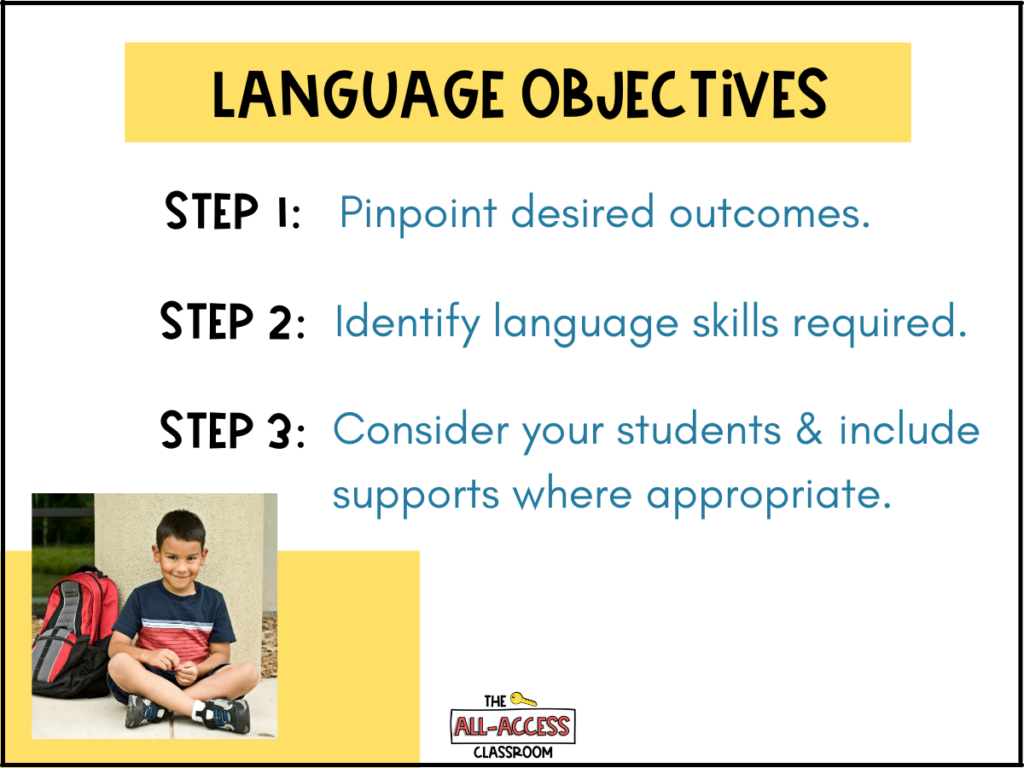
1. Give your content goal a hard look, and pinpoint desired outcomes.
Check out the verbs especially. Then think about what you want your students to do or demonstrate, during and/or at the end of your lesson.
2. Identify the language that students will need in order to accomplish this.
Where in the lesson will they be actively Listening, Reading, Speaking, or Writing? It may be all of these! But think about what element of your lesson is most likely to be a challenge for students due to a language obstacle. This becomes your language objective, and you’ll take time in the lesson to explicitly teach it. It could be part of the learning PROCESS, or part of the learning PRODUCT.
(Note: I know it might make your eye twitch to have to pick just one, but just try to balance it out over time. If you focus on a speaking skill for this lesson, look for ways to support a different skill next time. I repeat: Don’t try to address EVERY language-infused aspect of your lesson. Start small. Develop language objectives over time as you get the hang of it. Just you being conscious of one area of need and supporting it well will result in amazing things!)
3. Consider your students and include supports.
You do not need to have every English learner’s individual plan memorized. Same with IEPs. But you should have some basic understanding of what language your students CAN produce. For ELs, check with your EL specialist, the EL plan, or the results of the WIDA test for information. Also, if you have WIDA’s “Can Do Descriptors” or other guide available, it will help you know if your learners need support with certain activities.
Then based on what you know about your kiddos, decide what scaffolds or supports are appropriate. Visual images, sentence frames, and graphic organizers are just a few possibilities. Also include these supports in your language objective.

Content and Language Objectives Planning Template
Ok, I know this can be a bit overwhelming. Yes, there is a lot to consider. (I’m picturing you at your desk with your lesson planning template, state objectives, EL plans, Can Do descriptors, lists of scaffolds….Yikes!) So to help streamline the process for you, I wanted to design a content and language objectives planning template. This template includes all the info, prompts, formatted spaces, and helpful references that you need. Additionally, I’ve added some verbs for the various language domains, for quick reference.
Best news ever?…You get this resource for free! To get your own copy (for use in Google Slides™), click here!
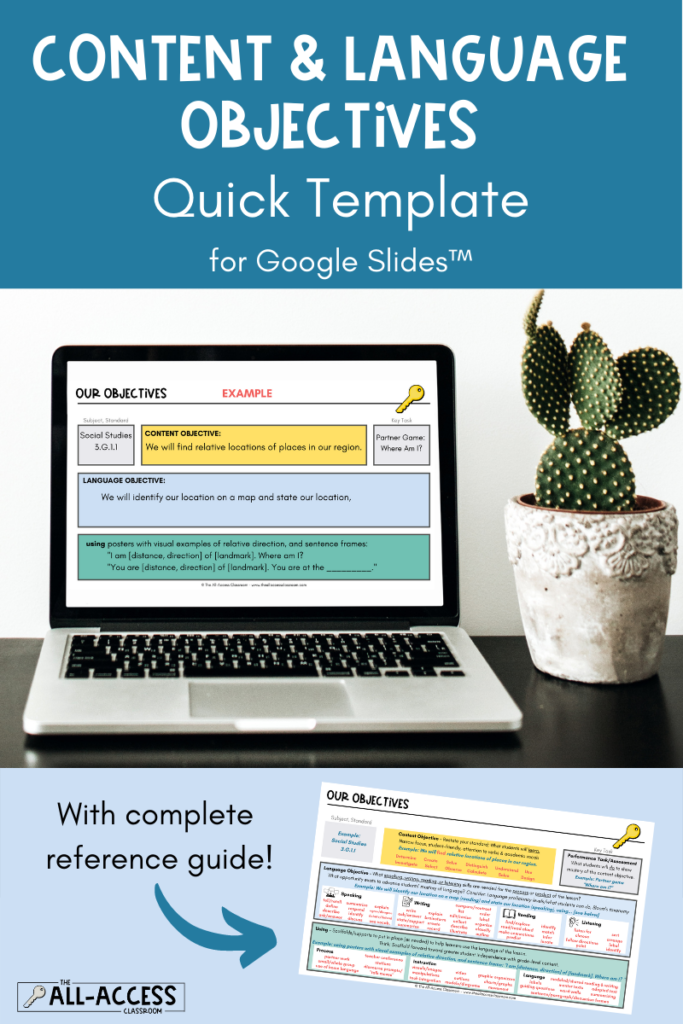
My hope is that this template will make clear how to write objectives for lesson plans. I want it to be a painless, quick step in the planning process. Keep this tool on-hand, and you’ll be good to go! After you use it, hit me up on Instagram, or shoot me an email! I’d love to know how it works for you, or if you have any questions!
Bonus Tips for Making Lesson Objectives Purposeful
Once you have your content and language objectives up on the board, how can you keep them from becoming a dried-up waste of board space? How do you make them meaningful, helpful, and purposeful for all? Here are three tips:
- Write objectives in student-friendly terms. You want students to easily read, understand, connect with, and remember the aim of their learning activities. Other than key content-related vocabulary, there shouldn’t be any words that your students might get hung-up on.
- “Chew on them” a bit. Think about gum. You don’t just put it in your mouth and let it sit there. You chew on it to release the flavor. Same with objectives. If you write them on the board and do nothing else, you may as well not post them. Instead, introduce each objective fully. Mark them up! Circle key vocabulary, underline verbs, put a star by new words or action words. Also, you can annotate them with clarifying comments or questions. Color code them. Write in synonyms above tricky words. Read them, reread, chorally read, and read again. In other words, get all those “juices” out, and your students will FULLY understand what they are expected to do.
- Throughout the lesson, feel free to refer to, repeat, and revisit the objectives. Use them as a guidepost to encourage student self-assessment. Also use them to direct YOUR assessment! If you get off track (or if there’s an unplanned fire drill), let the objectives be your guide.
Two Final Notes:
Try hard to resist the urge to just combine your content and language objectives into one. In the moment, doing this seems awesome. But you run the risk of each distinct objective losing its purpose–its punch–its direct focus. Also, it’s just nice of you to maintain clear goals for the students’ sake.
In conclusion, because you’re an amazing teacher, use your professional judgment. You do you! If it makes sense to write more than one content or language objective for your lesson, go for it! If it makes sense to have an overarching objective that your class will refer to throughout a few days or a week, that’s cool! What matters is the quality and purposeful integration of the objectives themselves into your learning environment.
For more on how to write objectives for lesson plans, check out:
Using Content and Language Objectives to Help All Students in Their Learning, from Achieve the Core
Recommended Resource
After introducing objectives, want to start your lesson by building background for your learners? You might be interested in this Building Background Activity Bundle!
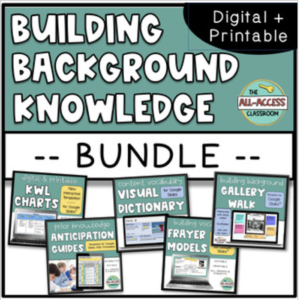
Well, there you have it! You know how to write objectives for lesson plans! You know the WHY, the HOW, and you’ve got a template to make it easy-peasy. Don’t forget to download your copy! I’m excited to see what you find is the IMPACT of approaching lesson planning this way!
Here’s to making your classroom an “all-access” classroom!
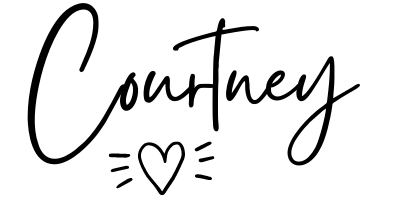

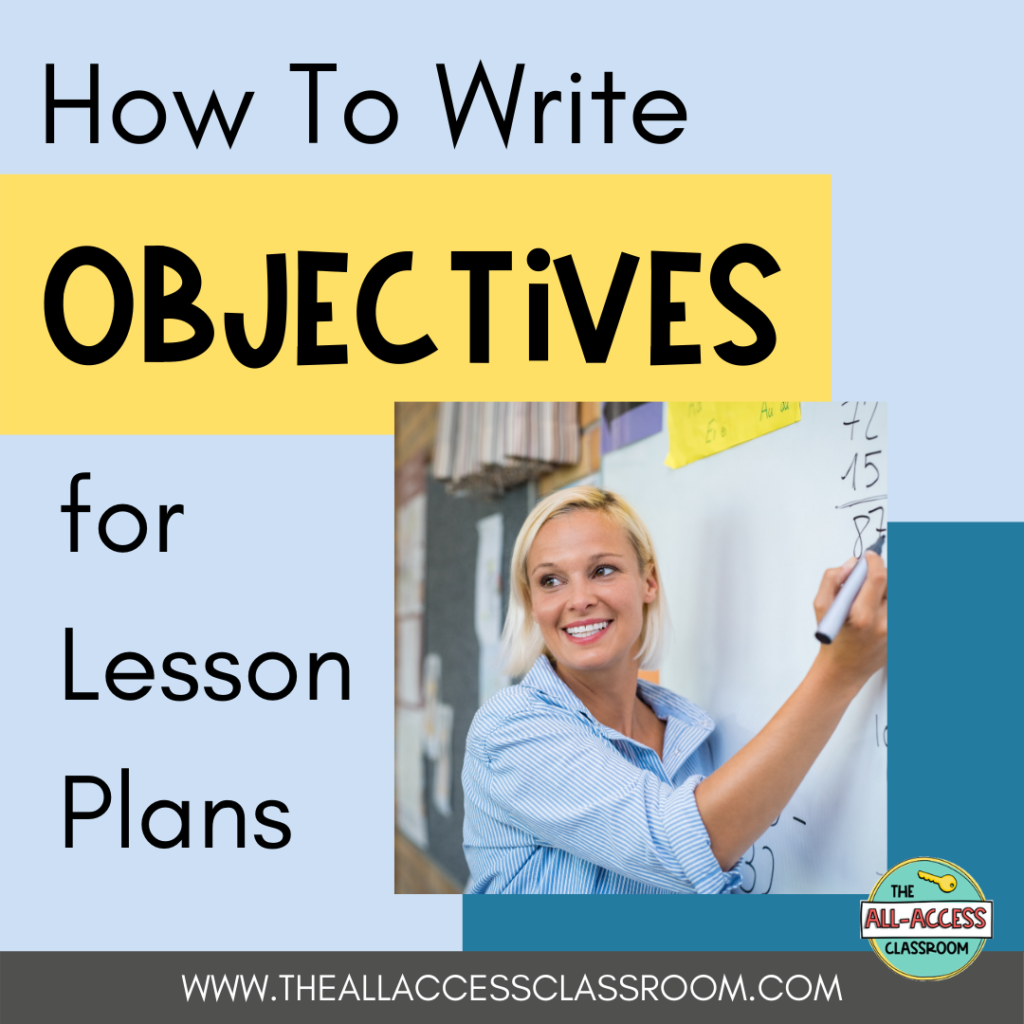

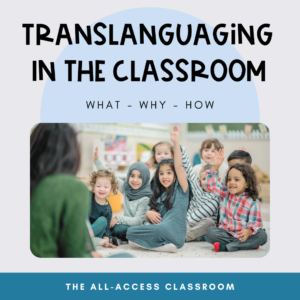
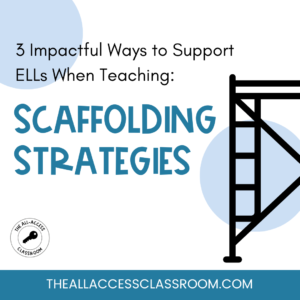
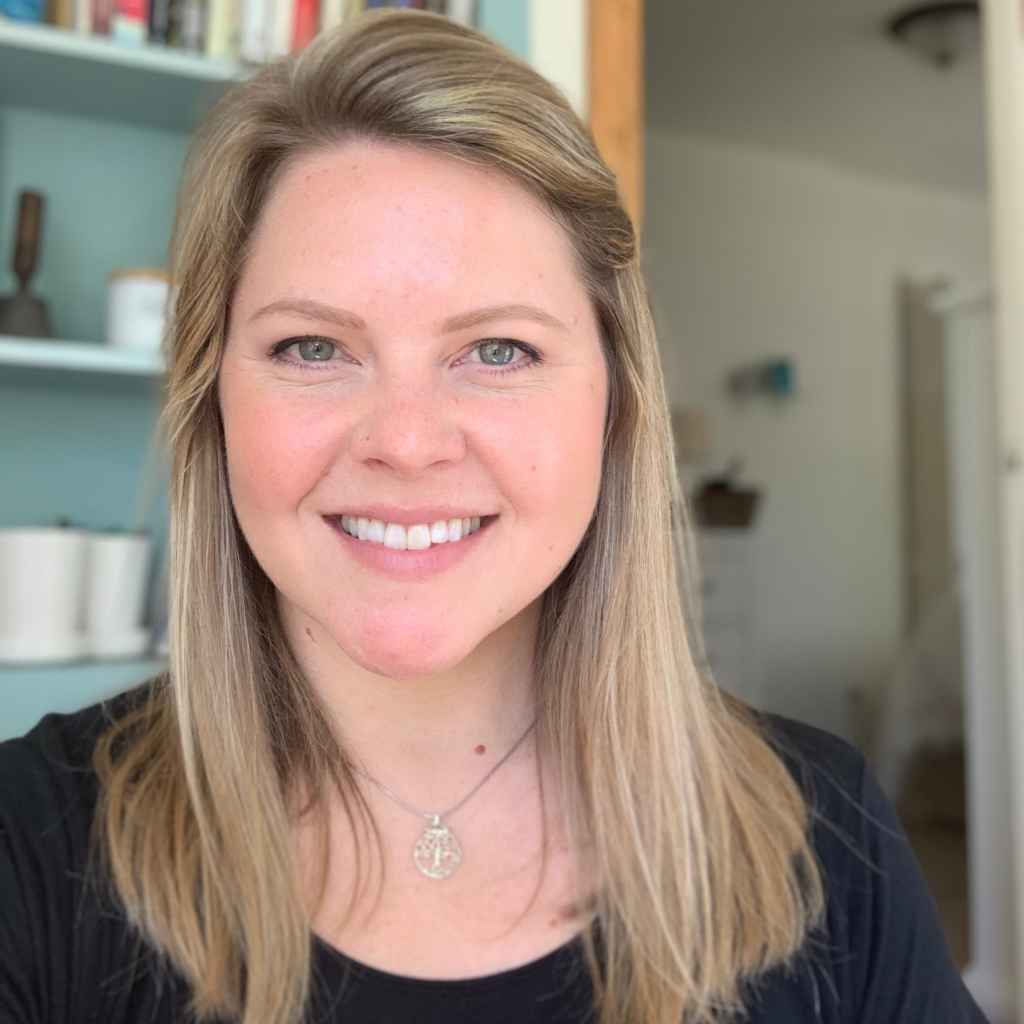
7 Responses